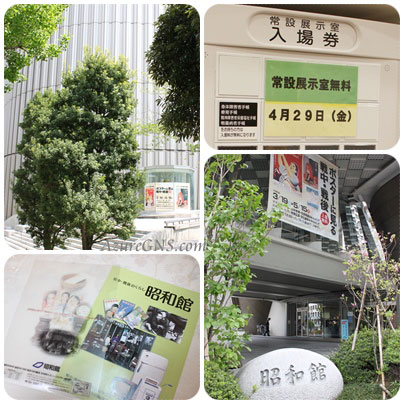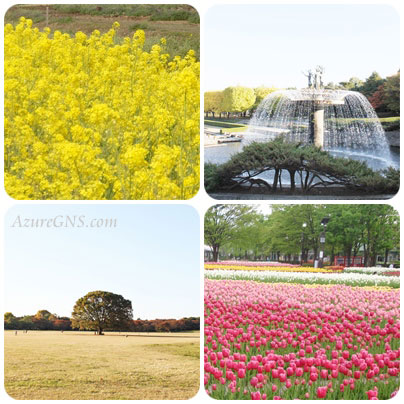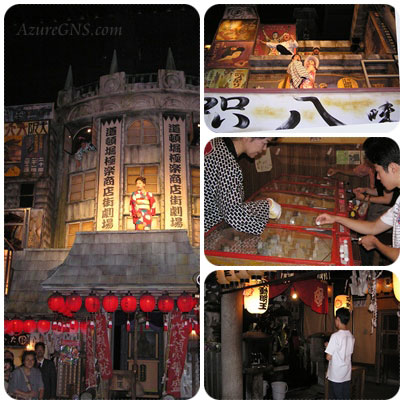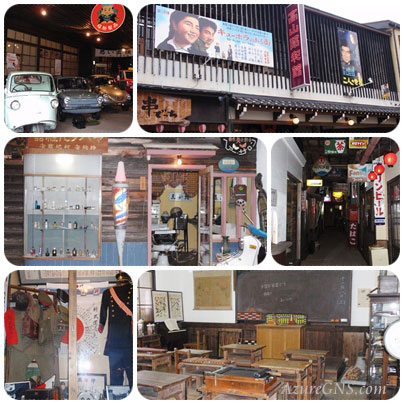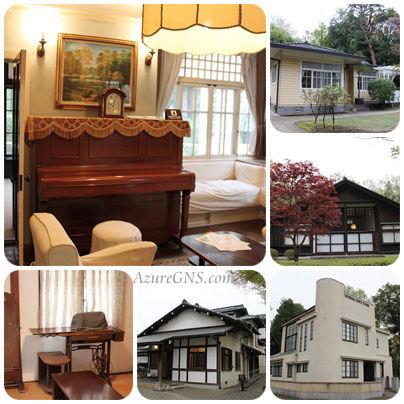WAGAYA NO SHOWA-NO-HI
(Our Showa Day Experience)
4月29日は私にとって物心がついた時から長年、天皇誕生日でした。
1989年(昭和64年)の昭和天皇崩御後、みどりの日になりましたが、何となく馴染めませんでした。
そして2007年(平成19年)に昭和の日が制定されました。
4月29日はみどりの日より、昭和の日の方が適していると思います。
April 29th had been TENNO-TANJOBI (the Emperor’s Birthday) for me ever since I could remember.
After the demise of the Showa Emperor in 1989 (Showa 64th yr), the day changed to MIDORI-NO-HI, the Greenery Day, but I could not get accustomed to it.
And then, SHOWA-NO-HI, the Showa Day, was established in 2007 (Heisei 19th yr).
I think SHOWA-NO-HI is more suitable than MIDORI-NO-HI for April 29th.
2011年(平成23年)の昭和の日に、靖国神社へお参りに行きました。
未曽有の被害を出した東日本大震災からまだ1か月半しか過ぎていない頃でした。
それまで何度か靖国神社を訪れましたが、こんなに閑散としているのは初めてでした。
靖国神社の方にお話を伺いましたが、外国人観光客がほとんど訪れなくなったとのことです。
国民の祝日なので、境内の数か所に日本の国旗の日の丸が掲揚されていました。
能楽堂では奉納音舞台が行われました。
拝殿では昭和の日の式典が行われました。
I went to Yasukuni Shrine on SHOWA-NO-HI in 2011 (Heisei 23rd yr).
It had been only one and half months since the Great East Japan Earthquake caused unprecedented damage.
I had visited Yasukuni Shrine several times before, but it was the first time for me to see the shrine so quiet.
I talked with the people who worked for the shrine, and they told me foreign visitors rarely came after the earthquake.
HINOMARU (the sun circle flag), the Japanese national flags are raised in some parts of the precincts of the shrine to celebrate the national holiday.
The ritual musical concert was held on NOHGAKU-DO (a play stage of NOH, a traditional Japanese play with songs and dances and performers wearing masks).
The ceremony of SHOWA-NO-HI was held in HAIDEN (a building for worship in a shrine).
靖国神社を後にして、道路を渡った所にある昭和館を訪れました。
1999年(平成11年)に開館した、昭和の中でも特に戦中戦後の国民生活を中心に資料を展示している国立博物館です。
昭和の日だったので、この日は入場無料でオリジナルクリアファイルをいただきました。
After I left Yasukuni Shrine, I visited SHOWA-KAN (the National Showa Memorial Museum) on the opposite side of the road.
It is the national museum that opened in 1999 (Heisei 11th yr), and it displays items illustrating the lifestyles of the Japanese people in the Showa period, especially during and after World War ll.
Thanks to SHOWA-NO-HI, the admission was free and I was presented an original plastic folder.
2015年(平成27年)4月29日に明治神宮会館で、特定非営利活動法人(NPO法人)「昭和の日」ネットワーク主催による「昭和の日をお祝いする集い」が開催されていました。
国歌斉唱、政治家の挨拶、学者の講演、コンサートなどが行われました。
この日は明治神宮では春の大祭が開催中で、雅な神楽が奉納されていました。
明治神宮は明治天皇と昭憲皇后を御祭神として1920年(大正9年)に創建されました。
全国や海外から奉納された365種、約10万本の木により、約70haの広大な人工林が造られました。
現代では結婚式場としても有名で、この日も結婚式も行われていました。
On April 29th, 2015 (Heisei 27th yr), ‘SHOWA-NO-HI WO OIWAI-SURU-TSUDOI (The Showa Day Celebration Meeting)’ was held under the auspices of NPO ‘Showa Day’ Network at the Meiji Shrine Hall.
The programs of the meeting are the national anthem, greetings by political leaders, a lecture meeting by a scholar and concerts.
On this day, HARU-NO-TAISAI (Spring Grand Festival) was going on at Meiji-jingu Shrine, and graceful KAGURA (sacred dance and music) was donated.
Meiji-Jingu Shrine was established in 1920 (Taisho 9th yr) in Shibuya, Tokyo; which is dedicated to the divine souls of Emperor Meiji and his consort Empress Shoken.
The vast artificial forest that covers an area about 70ha consists of 365 kinds of 100,000 trees donated from all over Japan and from overseas.
Nowadays this shrine is also famous for wedding ceremonies, and even on this day wedding ceremonies were held.
国立昭和記念公園は1983年(昭和58年)に昭和天皇御在位五十周年記念に作られました。
この土地は元々日本陸軍の飛行場でしたが、第二次世界大戦後は米軍に接収され立川基地になりました。
1977年(昭和52年)に基地が日本政府に返還された後、陸上自衛隊の立川駐屯地になり、後に残りの一部が公園になりました。
165.3haの公園の中に、花畑、日本庭園、広大な芝生の広場、プール、盆栽苑などが整備されています。
2005年(平成17年)には昭和天皇記念館が開館しました。
昭和天皇と香淳皇后のご遺品を中心に、そのご生涯が紹介されています。
昭和の日は入園無料になります。
Showa Commemorative National Government Park was established in 1983 (Showa 58th yr) to celebrate the 50th year of the Showa Emperor’s reign.
Originally there was a Japanese military airbase on this site, and after World War ll, the US military occupied it as the Tachikawa Base.
After the base was returned to the Japanese government in 1977 (Showa 52nd yr), the Japan Ground Self-Defense Force established the Tachikawa Base on part of the site, and later the park was opened in another section of the site.
There are flower gardens, traditional Japanese gardens, large lawn areas, a swimming pool and a garden of BONSAI (a Japanese traditional culture using miniature trees in containers) in the 165.3ha park.
In 2005 (Heisei 17th yr), the Emperor Showa Memorial Museum was established, where the articles left by the Showa Empress and the Empress Kojun are mainly displayed and their lives are illustrated.
On SHOWA-NO-HI, the park is free of charge.
現在、昭和がちょっとしたブームになっています。
特に1955年(昭和30年)以降の高度経済成長期を懐かしむ人もいます。
東京都の青梅市や大分県の豊後高田市のように街全体で昭和の雰囲気を残しているところもあります。
各地には昭和時代に触れることができる博物館や娯楽施設がたくさんあります。
Nowadays there’s a little Showa boom.
Some look back with nostalgia on especially the era of high economic growth in and after 1955 (Showa 30th yr).
The entire towns of Ome City in Tokyo Metropolitan Prefecture and Bungotakada City in Oita Prefecture keep the atmosphere of the Showa period.
There are many museums and entertainment facilities in various districts where people can experience the Showa period.
伝統ある演芸場だった浪花座の跡地に2004年(平成16年)に道頓堀極楽商店街がオープンしました。
施設の中では昭和初期の大阪の街並み、店舗、家が再現されていました。
息子と一緒に昭和の街でミュージカルショーを楽しみ、昔ながらのゲームをして、当時の料理を食べました。しかし、残念ながらこの娯楽施設は2009年(平成21年)に経営不振で閉館してしまいました。
Dotonbori Gokuraku Shotengai was opened on the former site of Naniwa-za, a long-standing entertainment hall, in 2004 (Heisei 16th yr).
The streets, shops and houses of Osaka in the beginning of the Showa era were replicated inside.
My son and I enjoyed a musical show on the Showa-style downtown, played old-fashioned games and ate food of the period.
However, the amusement facility was closed because of financial difficulties in 2009 (Heisei 21st yr).
2008年(平成20年)に岐阜県高山市にある高山昭和館を訪れました。
第二次世界大戦、1964年(昭和39年)の東京オリンピック、1970年(昭和45年)の大阪万博をはじめとした、歴史的に貴重な資料が展示されていました。
懐かしい街並みがそこに再現されていて、子供時代にタイムスリップをしたような気持ちになりました。
In 2008 (Heisei 20th yr), I visited the Takayama Showa-kan in Takayama City, Gifu Prefecture.
There were many valuable historical materials representing World War ll, the Tokyo Olympic Games in 1964 (Showa 39th yr) and the Osaka Expo in 1970 (Showa 45th yr).
I felt as if I had been taken back to my childhood when I saw the streets and houses of the good old days.
江戸東京たてもの園は1993年(平成5年)に、都立小金井公園の中に開園した野外博物館です。
東京都墨田区の東京都江戸東京博物館の分館です。
7haの敷地に、江戸時代から昭和初期までの30棟の建造物が移築されています。
センターゾーン、東ゾーン、西ゾーンの3つのゾーンに分かれています。
The Edo-Tokyo Tatemono-en is an open-air architectural museum which was established in Koganei Park (a metropolitan park in Tokyo) in 1993 (Heisei 5th yr).
This is a branch museum of the Edo-Tokyo Museum in Sumida Ward, Tokyo.
30 architectural structures from the Edo Period to the early years of the Showa Period were dismantled and reconstructed on a 7ha site.
The museum is separated into three zones: the Central Zone, the Eastern Zone and the Western Zone.
センターゾーンは皇居外苑から移築された旧光華殿、西川製糸会社創業者の別邸、20代内閣総理大臣の高橋是清邸などがあります。
高橋是清邸の2階は1936年(昭和11年)に起きた陸軍兵士によるクーデター未遂事件である2.26事件の現場の1つでした。
In the Central Zone, the old Kokaen (ceremony hall) relocated from the outer garden of the Imperial Palace, the former secondary residence of the founder of Nishikawa Silk-reeling Company and the former residence of Takahashi Korekiyo, the 20th Prime Minister.
The second floor of the residence of Takahashi Korekiyo was one of the scenes of the February 26 Incident, an attempted coup d’état by army soldiers on 26 February 1936 (Showa 11th yr).
東ゾーンには昭和初期の下町が再現されています。
商家、銭湯、居酒屋、旅館などが立ち並び、建物内では当時の庶民の生活の様子を垣間見ることができます。
The downtown areas at the beginning of the Showa Period are reproduced in the Eastern Zone.
There are merchant houses, a public bath, a Japanese-style bar and an inn, and common people’s lives in those days are shown inside.
西ゾーンにはさまざまな建築様式の瀟洒な住宅や写真館があります。
どれも昭和初期以前の建物ですが、今見てもとてもモダンです。
In the West Zone, there are sophisticated residences and a photo studio in various styles of architecture.
Though all of them were built in and before the early years of the Showa Period, they look very modern even now.
(「昭和の日」へ戻る)
(Back to ‘The Showa Day‘)

